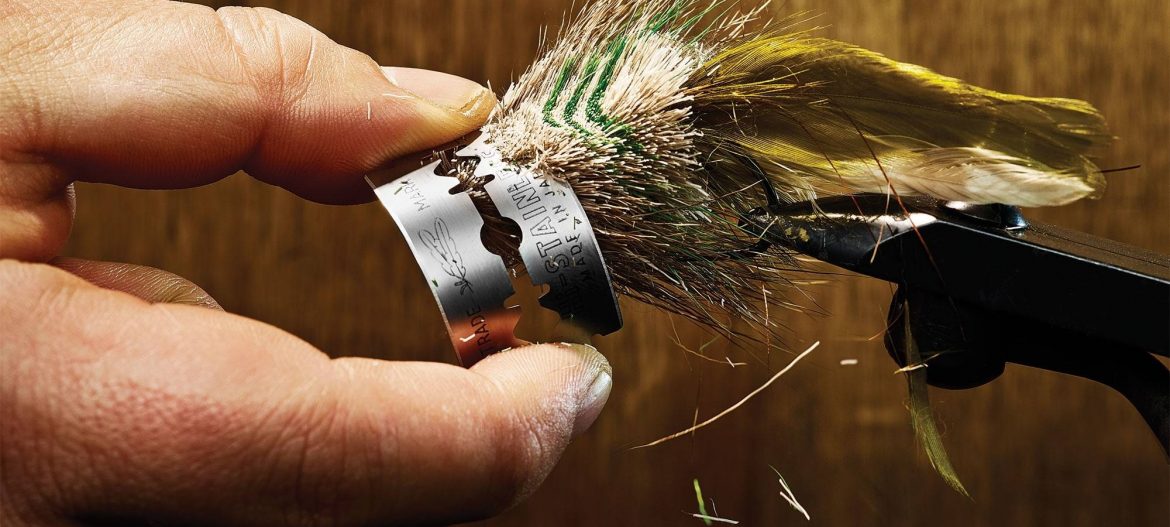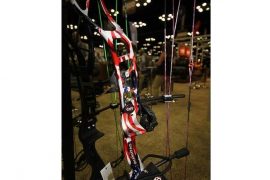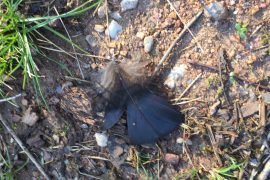
verything about modern flyfishing is fast. We’ve got fast rods, fast-shooting heads, fast-drying UV resin, and even premade wings, legs, and tails that let you whip up flies faster than ever. This might be why spun-hair bass bugs aren’t commonplace in fly boxes today. Everything about them is slow. They need to be fished with patience, you can’t knock them out at the vise, and their air-resistant bodies made Granddad’s slow, noodly fiberglass rod the perfect hair-bug delivery tool. Thing is, spun-hair bugs haven’t lost an ounce of potency since Granddad’s day. And while it’s true that a well-made hair bug isn’t cheap, if you know what to do with one, it’ll repay you with more giant fish.
Hair Tonic
1. Soak It In
Not only is Pat Cohen the man when it comes to tying hair bugs (see “Spin Class,” below), he’s also a leading expert on fishing them. It’s important to remember that a hair bug behaves differently than a similar fly with a foam, cork, or balsa body, which is why Cohen says you don’t want to just tie one on and slap it down. A little bit of hair-bug prep goes a long way.
“I prefer to fish hair bugs that are waterlogged,” says Cohen. “I’ll actually soak them for up to an hour before fishing to make sure all of that hair absorbs as much water as possible. Just before I start casting, I’ll squeeze the bug out. What you end up with is a fly that will naturally ride lower in the surface film.”
According to Cohen, a hair bug that’s riding low produces a deeper gurgle and pop that simply can’t be matched by topwater flies with solid bodies. This sound can be a dinner bell for huge bass if you present the fly correctly. Cohen says it’s important not to overwork a topwater hair bug. He always lets the splat-down rings dissipate before moving his fly. “I give it a couple of pops and let it sit for three to five seconds,” he says. “If there’s a bass in the area, it knows your fly is there. Bass are naturally curious and will come scope it out.
You just have to vary your retrieve cadence and speed to figure out how to make it eat.”
2. Sinkers and Floaters
Hair bugs are surface flies, so you’d naturally want to cast them on a floating fly line. Most of the time, anyway. If you’re looking for a leg up on trophy pike, bass, or even trout, Cohen recommends ditching the floater, particularly when you’re using a hair diver. Pair these buoyant bugs with a heavy-grain sink tip, and the results can be positively stunning.
“That sinking fly line wants to go down, and a floating fly wants to come up. So you get this up-and-down jigging action, along with this really crazy, erratic side-to-side motion,” Cohen says. “It’s almost similar to a crankbait’s wobble. You can fish it just like a streamer, and it’s absolutely deadly.”
To dial in exactly the action you want, Cohen says, all you have to do is play with leader length. The longer the leader, the more time it will take the sink tip to pull the fly down and the more subtle the action. If you use a short 2- or 3-foot leader, the fly will drop faster and you’ll get increased action on the strip. By varying sink-tip weight and length, you can also fine-tune exactly where in the water column you want that diver to work or suspend.

3. Pop and Drop
Deer-hair poppers might have the uncanny ability to draw in bass, but that doesn’t…





